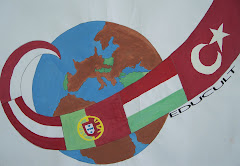
Easter in
Easter is a two-day holiday in
A number of interesting folk customs are still alive in the European country, which make the festivities colourful. Out of the customs, sprinkling perfumed water and egg-painting are very popular and are followed even today. Go through the following lines to know all about the celebrations of Easter in
Busojaras
The most spectacular of the Eastertide folk-festivals is the so called 'busojaras' (walk of the busos, legendary monsters), in the
Lent
The Hungarians regard 'Lent' as the Great Fast for Easter. Since meat is forbidden during Lent, the day before Ash Wednesday is called 'húshagyó kedd', which means 'meat abandoning Tuesday'. On Holy Saturday, what is known as 'Nagyszombat' in Hungary, people take food baskets filled with kalács (nice baked cake), red eggs and salt to the church, to be blessed by the clergyman. The blessed food is then eaten by devotes, right after the resurrection ceremonies culminate.
Centuries ago, on Palm Sunday, it was customary to bless not only branches but also the various flowers of the season. In fact, the flowers are still mentioned in the antiphons after the prayer of blessing. Thus, the name Flower Sunday (Virágvasárnap) is used in
Good Friday, the most solemn day of Lent was spent in total fast almost all over the country. By the time Good Friday (nagy-péntek) had arrived the house was clean, the baking completed and the eggs decorated. In some regions however, the eggs were deco-rated only on Good Friday!
Midnight Resurrection Ceremonies
Holy Saturday was - still is - the day of blessing of the food. In a food basket kalács, smoked ham, red eggs [decorated eggs] and salt, in some places also wine is taken to the church to be blessed. This food will be eaten after the resurrection ceremonies.
Easter is referred to as the Festival of Meat (HÚSVÉT). On this day meat can be eaten again after the long fast (40 days).
On Holy Saturday, worshippers congregate in the church for midnight resurrection ceremonies. There, the devotees sing Easter songs, chant hymns in the praise of Lord Jesus Christ and admire the sacrifice done by him, for humanity. After the church service is over, people carry a statue of Christ and religious banners and gather to form a procession, which passes through the parish. Chanting of hymns can be heard in the procession.
Egg Painting
Easter eggs are beautifully decorated in
Easter Monday
(Dousing Day, Water Plunge Monday)
Sprinkling, the very popular custom of Easter in
Easter Folk Customs in Hungary
Easter Activities
Diana


No comments:
Post a Comment